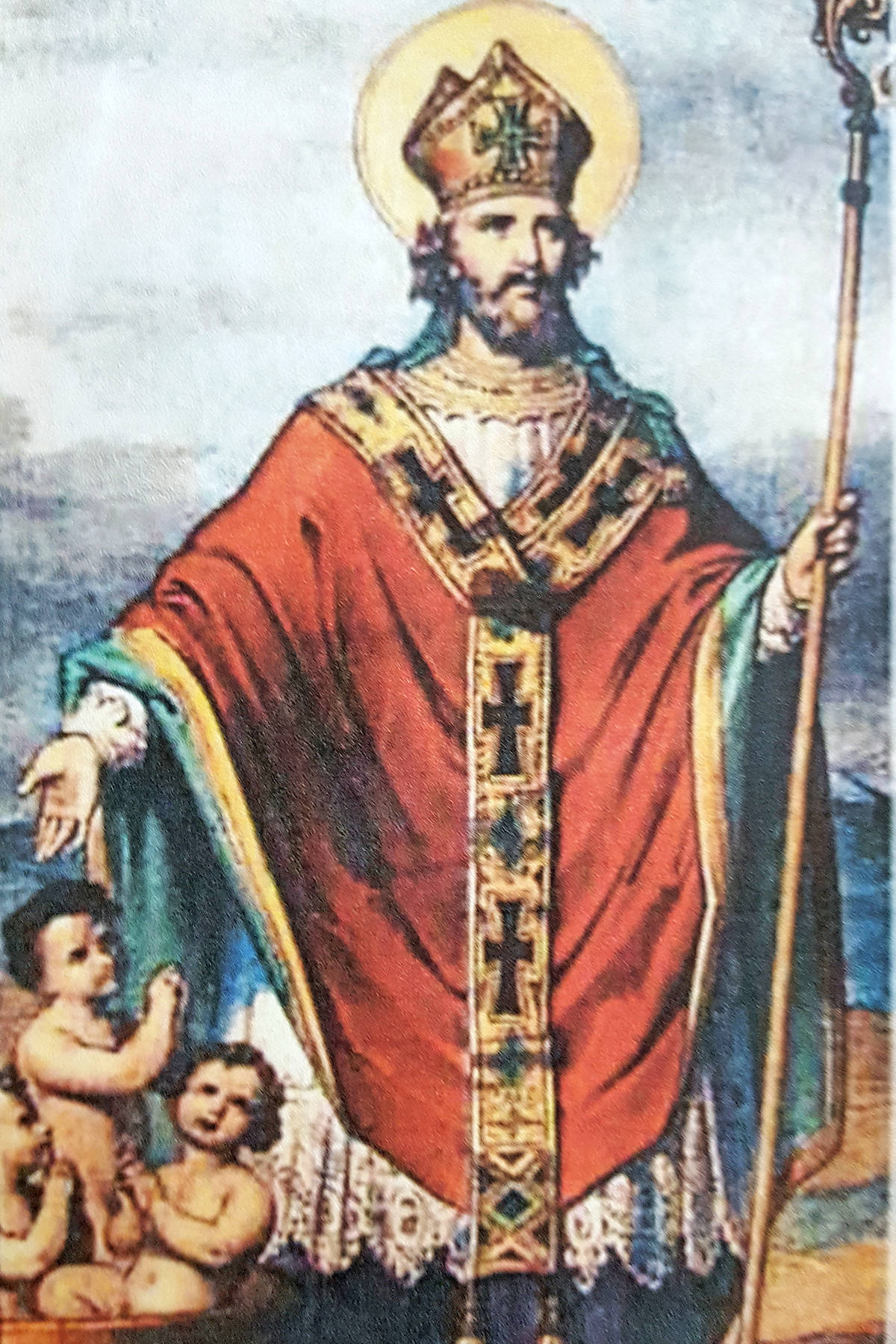Barry Sale
Special to the Tribune/Advisor
The history of Santa Claus? Really?
Well, the title of this column is Haphazard History, and we are getting into that Christmas time of the year, so why not?
Actually, the history of the most recognized holiday character in North America is quite fascinating, with all sorts of twists and turns along the way.
It all began in the fourth century A.A. when a man named Nicholas became the bishop of a church in the village of Myra in what is now Turkey.
We know very little about him, but it’s fair to say that he must have been a kind and generous man. Most of the legends about him involve kind acts towards children.
For example, one day, Nicholas was walking past a house when he overheard a distraught man telling his three daughters that he was selling them into prostitution because he couldn’t afford the dowries necessary to make them desirable wives.
Later that evening, Nicholas sneaked back to the house and threw a bag of gold in through an open window.
He did this again on the two nights following as well, providing enough money for the three dowries (a later version of this story has one of the bags of gold landing in a stocking that was hanging over the fireplace to dry).
Another story tells of Nicholas checking into an inn for a bed and a meal.
During the night, he heard cries from the cellars. He made his way down to the lowest level where he found three young boys chained to the wall.
The innkeeper evidently had a lucrative business on the side nabbing street children and selling them into slavery.
Nicholas released the boys, gave them some food and some coins and helped them to escape.
After he died, Nicholas was canonized as a saint.
READ MORE: Santa Claus is coming to Miocene
He actually became the most popular saint in all of Christianity. He is the guardian saint of Russia, Austria, France, Germany, Norway and Greece.
He is the patron saint of children, virgins, pawnbrokers, pirates, thieves, brewers, pilgrims, fishermen, barrel makers, dryers, butchers, meat packers and haberdashers. He has more churches named after him than any of the apostles.
To honour his position as the patron saint of children, Europeans began celebrating the feast of St. Nicholas, which falls each year on Dec. 6. Over the years the tradition developed of giving gifts to the children on the eve of this special feast occasion.
This tradition was especially popular in Holland. The Dutch St. Nicholas was portrayed as a tall, thin, bearded character dressed in bishop’s robes and hat, and carrying a shepherd’s crook.
He rode on a donkey, which over a couple of centuries, morphed into a white horse. On St. Nicholas Eve, children left their wooden shoes out filled with straw for the donkey.
In the morning, the straw was gone, replaced by presents in the shoes.
In 1609, the North American Dutch colony of New Amsterdam was established, and for the next 50 years or so, it flourished, with all the traditions and customs of the old country.
Then, in 1664, it was taken over by the British, who renamed the colony New York. The Dutch and British colonists coexisted peacefully, and each had their own customs.
Over the next 200 years many of the practices and celebrations became blended.
In 1809, the writer Washington Irving (the same man who wrote Ichabod Crane and the Legend of Sleepy Hollow published a book describing the Dutch traditions.
In it were several references to “Sinter Klaas,” a slang version of “Sint Nikolass,” or Saint Nicholas.
The book also included a table of how Sinter Klaas flew across the sky in a wagon and dropped presents down chimneys for deserving little boys and girls.
Irving’s Sinter Klaas was neither a church bishop nor a saint, but more of a jolly fellow who radiated good will.
The English settlers, however, enthusiastically adopted the joyful celebrations of St. Nicholas Day, but over time, these celebrations gradually merged into their own Christmas traditions.
Then, along came Dr. Clement Clarke Moore, a doctor of divinity in New York.
In 1822, he sat down to write a Christmas poem for his children.
His wife liked the poem so much that she sent copies to her friends, and somehow, it wound up being printed anonymously in the Troy, New York Sentinel on Dec. 23, 1823.
That poem was entitled “The Night Before Christmas” and it eventually became the best known poem in American history.
Moore was heavily influenced by Irving’s description of Sinter Klaas, but he made a few changes of his own.
The shoes became stockings hung by the chimney with care; the wagon became a sleigh pulled by eight tiny reindeer; Sinter Klaas became a jolly old elf who dressed all in furs and went down the chimney.
You know the rest.
Moore’s poem was so vivid and real to children that it became the definitive part of the legend, as Sinter Klaas was Americanized into Santa Claus.
Even so, nobody really knew what Santa looked like.
In 1863, Harper’s Weekly hired 21-year-old Thomas Nast to draw a picture of Santa Claus bringing gifts to Union troops fighting in the Civil War.
The Santa that Nast drew was a jolly, roly poly old man who wore a star spangled jacket, striped pants and a soldier’s cap.
Gradually, each Christmas over the next 40 years, Nast refined his character, adding new details every year. Eventually, he dropped the stars and stripes in favour of a plain dark wool suit.
Then, the Coca Cola company got into the act.
READ MORE: Where’s Santa? Track the jolly old fellow’s trip across the world this Christmas
In 1931, they hired artist Haddon Sandblom to create the artwork for a massive Christmas advertising campaign.
He dumped Nast’s black, grey and white Santa suit and replaced it with one that had Coca Cola’s signature colours of red and white.
Then he found a real life retired Coca Cola rep who looked so much like Santa Claus that he could be used as a model and that was it.
Santa would forever after be a huge, fat, perpetually happy man with a broad belt and black hip boots wearing a Coca Cola red suit.
For almost 90 years now, the image of Santa Claus that we think of in North America is that one.
It has been used as a major advertising graphic, not only for Coca Cola, but also for countless other brands, both major and minor.
Today, the Santa Claus we know is a far cry from the humble bishop who lived halfway around the world some 17 centuries ago.
Do you have a comment about this story? email:
editor@wltribune.com
Like us on Facebook and follow us on Twitter.

